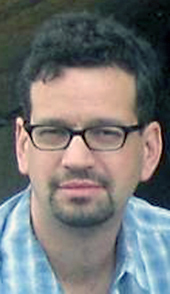How do data from 10 telescopes, set across the United States, merge to make the most detailed images of astronomical objects ever attained? ADVERTISING How do data from 10 telescopes, set across the United States, merge to make the most
How do data from 10 telescopes, set across the United States, merge to make the most detailed images of astronomical objects ever attained?
Join Dr. Geoffrey Bower of the Very Long Baseline Array for a look at how scientists use this network of instruments to understand black holes, the structure of our galaxy and the nature of stars at 7 p.m. Feb. 19 during ‘Imiloa Astronomy Center’s next Maunakea Skies program.
Atop Mauna Kea sits one component of the largest telescope in the world, the Very Long Baseline Array, which consists of 10 radio telescopes distributed across the U.S., from Hawaii to the Virgin Islands, with a reach that extends as far as telescopes in Earth orbit. The great distances between these 10 telescopes enable astronomers to observe the universe with an unprecedented precision — capable of resolving Neil Armstrong’s footprint on the moon.
Bower will share how the VLBA’s high-resolution view enables us to see the hot plasma that is orbiting and ejected from black hole systems, as well as how it can perform the most accurate measurements of distance and motion, giving us a detailed view of the structure of our galaxy.
The Maunakea Skies program will be hosted by ‘Imiloa planetarium technician Emily Peavy, who will provide observational highlights of the current night sky over Hawaii, and point out prominent constellations and stars visible during this time of year.
Cost is $8 for Individual, Dual, Kupuna and Family members; $6 for Patron members; free for Silver, Gold and Corporate members; $10 for nonmembers. For more information, visit www.imiloahawaii.org or call 932-8901.




